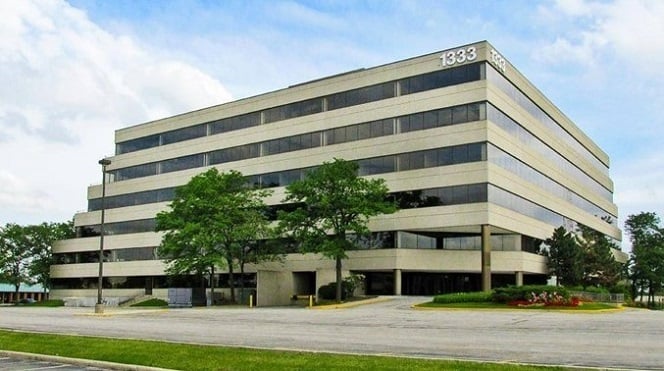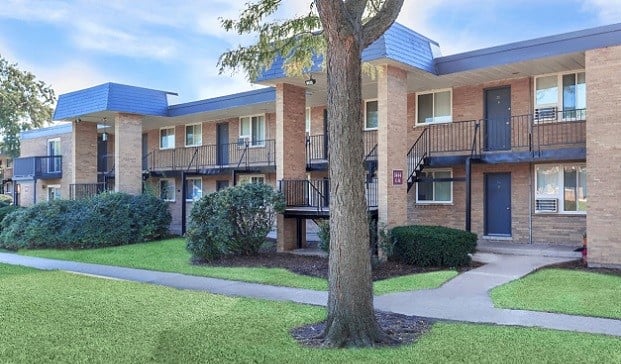
ATLANTA—Association boards and property managers can play a vital role in helping the environment—and helping a landlord's bottom line. Indeed, you can pick up cold hard cash from the table with the right strategy.
But what are those strategies? GlobeSt.com caught up with Chris Normandeau, director of FS Energy, the energy management and advisory subsidiary of FirstService Residential, to get some insights.
Nearly 40 percent of US energy consumption can be attributed to residential and commercial buildings, according to the U.S. Energy Information Administration. Multifamily buildings, which represent a substantial and growing portion of the residential properties in the US, contribute significantly to this energy consumption. Normandeau tells GlobeSt.com this is true of both older buildings that do not meet today's energy-efficient standards as well as newer buildings that do not put a focus on proactive property management.
“You'll never know how much energy you are saving, unless you know how much you are using,” he explains. “That's why we stress to boards the importance of performing a comprehensive energy audit.”
For properties in FirstService Residential's South Florida portfolio, this key first step is included as part of its management offerings. For other properties, the audit may cost money up front, but Normandeau says it is the best way to find out where energy is being used and what opportunities there are for conservation. This “Energy Opportunity Assessment” provides a roadmap that will lead the board to cost savings that will more than offset the initial investment.
“Once the board has conducted an energy audit, there are a few other 'low hanging fruit' that can significantly reduce energy consumption, increase savings, and pay for themselves quickly—besides installing LEDs,” Normandeau says. “For example, installing a water pump control device—which restricts the pump speed while delivering the same amount of water to the building—delivers significant savings, and the payback period can be only two to three years.”
Normandeau points to other low-cost, high return investments, including: lighting controls in stairwells, clubhouses, amenities, etc.; regular HVAC maintenance; continually checking for and repairing leaks; installing tankless water heaters; implementing training programs for staff to educate them on how to program thermostats in common areas, turn off lights and conserve water; and championing energy efficiency tips and benefits with residents to influence positive changes in energy consumption.

ATLANTA—Association boards and property managers can play a vital role in helping the environment—and helping a landlord's bottom line. Indeed, you can pick up cold hard cash from the table with the right strategy.
But what are those strategies? GlobeSt.com caught up with Chris Normandeau, director of FS Energy, the energy management and advisory subsidiary of FirstService Residential, to get some insights.
Nearly 40 percent of US energy consumption can be attributed to residential and commercial buildings, according to the U.S. Energy Information Administration. Multifamily buildings, which represent a substantial and growing portion of the residential properties in the US, contribute significantly to this energy consumption. Normandeau tells GlobeSt.com this is true of both older buildings that do not meet today's energy-efficient standards as well as newer buildings that do not put a focus on proactive property management.
“You'll never know how much energy you are saving, unless you know how much you are using,” he explains. “That's why we stress to boards the importance of performing a comprehensive energy audit.”
For properties in FirstService Residential's South Florida portfolio, this key first step is included as part of its management offerings. For other properties, the audit may cost money up front, but Normandeau says it is the best way to find out where energy is being used and what opportunities there are for conservation. This “Energy Opportunity Assessment” provides a roadmap that will lead the board to cost savings that will more than offset the initial investment.
“Once the board has conducted an energy audit, there are a few other 'low hanging fruit' that can significantly reduce energy consumption, increase savings, and pay for themselves quickly—besides installing LEDs,” Normandeau says. “For example, installing a water pump control device—which restricts the pump speed while delivering the same amount of water to the building—delivers significant savings, and the payback period can be only two to three years.”
Normandeau points to other low-cost, high return investments, including: lighting controls in stairwells, clubhouses, amenities, etc.; regular HVAC maintenance; continually checking for and repairing leaks; installing tankless water heaters; implementing training programs for staff to educate them on how to program thermostats in common areas, turn off lights and conserve water; and championing energy efficiency tips and benefits with residents to influence positive changes in energy consumption.
© Touchpoint Markets, All Rights Reserved. Request academic re-use from www.copyright.com. All other uses, submit a request to [email protected]. For more inforrmation visit Asset & Logo Licensing.






